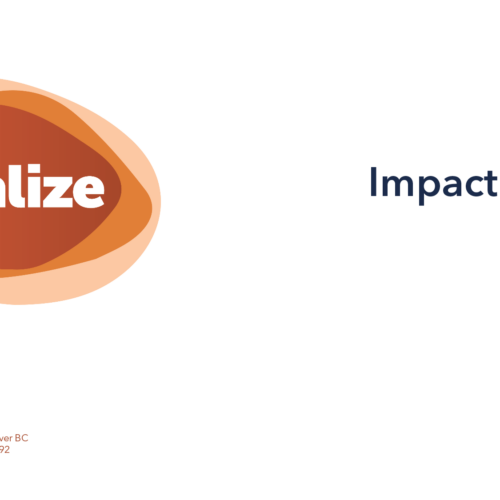CEO succession planning: pitfalls and solutions
Published on June 12, 2024
Here is a shocking fact: 54% of corporate boards and 78% of non-profit boards do not have a formal CEO succession plan in place.
Despite a massive exit of CEOs during and immediately following the COVID-19 pandemic, recent studies have not shown any significant improvement in the number of private company and non-profit boards that have developed formal CEO succession plans.
These statistics point to an alarming problem, and one that has significant implications for the future health and sustainability of the very organizations that sustain our economy and our communities. We live in an era of profound, rapid, and unpredictable change. Not since the dawn of the modern industrial age has human society been confronted with such sweeping changes to our modes of production, to the fundamental nature of our economy and to the demands placed on non-profits and charities to take care of increasingly pressing social and community needs.
The leaders that we’ll need to address challenges – while simultaneously building sustainable, impactful organizations – will be different from the leaders that were needed twenty years ago.
The new leadership landscape
Today, corporations are being challenged to think and act differently. Milton Friedman’s utilitarian thesis, that the only social responsibility of corporations is to maximize shareholder wealth, is being tossed on the bonfire of history.
A new vision of the corporation is rapidly asserting itself. Rather than being solely concerned with shareholder value, corporations and their leaders are being challenged to think about the role of business in solving some of the world’s most pressing social and environmental challenges. CEOs are being asked tough questions about their impact on communities and the steps they are taking to shrink carbon footprints, adopt responsible water stewardship practices, and implement living wage and DEI policies in their organizations.
At the same time, non-profit organizations in Canada and the US are being challenged to find innovative ways to solve increasingly dire social challenges: food insecurity, migrant and refugee resettlement, racial justice, and reconciliation with indigenous communities… and the list goes on. Additionally, non-profits are being challenged to find new and innovative sources of revenue in an era of increasing competition for donor and government funding. These currently emerging challenges have massive implications for the leadership of corporations and non-profits alike. Increasingly, the leaders that we’ll need to address these challenges – while simultaneously building sustainable, impactful organizations – will be different from the leaders that were needed twenty years ago.
The challenge of being a CEO
Organizational leadership is an enormously complex, sometimes lonely, and occasionally thankless role – regardless of the size of the organization or industry and markets in which it operates. CEOs today are expected to balance the expectations of external stakeholders, employees, civil society groups, markets, media, and the general public.
Managing these complex, and sometimes competing demands, has become even more challenging. Employees are now more empowered than ever to demand that organizations adopt policies and renovate organizational cultures to prioritize broader societal issues, such as climate change or racial and social justice. Top talent now seeks out companies that share their values and strive to make a positive impact on the world. Those choices are also increasingly transnational as governments open their doors to digital workers. This serves as a means of attracting new talent, new ideas, and, in many cases, much-needed sources of tax revenue.
In any organization, the ultimate responsibility for finding a way forward rests with the CEO. Boards have a role to play, as do senior managers. But, in the final analysis, it is the CEO who makes the operational decisions and shoulders the burden for making the right choices.
There is an old adage: it’s lonely at the top”. We live in an era where the concept of the vulnerable CEO is becoming both more accepted and expected. But we also expect CEOs to lead, and to give their employees, boards, and stakeholders confidence that they have the right plan and the skills to steward the organization through whatever challenges it faces.
And therein lies the essential loneliness that can confront any CEO who is faced with navigating an organization through periods of change and uncertainty. We don’t know what unexpected challenges or crises we’ll face in the future. Will increasing income inequality spark violent social disruption? Will we be able to navigate the opportunities and potentially serious problems poised by AI? Will our non-profit and civil society organizations be able to meet the growing demand for community services amidst intensifying competition for government and donor dollars?
The answer will lie in the ability of boards to select, deploy, train and support CEOs and organizational leaders who have the right mix of qualities, knowledge, and mindsets to tackle the forces confronting corporations and non-profits alike.
Decoding the CEO hiring challenge
The situation described above is a “red alert” moment. It calls for all hands – i.e., the members of the Board – to put a laser-focus on ensuring the organization has the right leadership now and a well-crafted plan to secure a new CEO when the time comes.
Boards of directors have many responsibilities, many of which are set down in law. These responsibilities, such as acting in the best interest of the organization or avoid conflicts of interest, are useful in guiding a board to fulfill its legal obligations. However, all too often, the crucial significance of stable leadership and succession planning is overlooked amidst the maze of discussions about how boards ensure compliance with legal duties.
Why is that? Corporate governance experts have put forward numerous theories and observations in an attempt to explain why so many boards either lack a formal succession plan or avoid discussing succession planning until a crisis, such as the unexpected departure of the CEO, occurs.
Listen to Michael Cook, client solutions specialist in technology and product innovation at Realize, shares his 30-second thoughts on why CEO succession planning is so difficult for most organizations.
6 reasons boards struggle with succession planning
1. Aligning perspectives
Succession planning involves aligning the perspectives of the entire board around a clear understanding of what the organization needs in its next CEO. However, aligning the perspectives of 10, 15, or even 20 individuals can be a daunting challenge. It can also be a very time-consuming task and as a result, easily pushed down the Board’s list of priorities when other pressing matters arise.
2. Assessing future needs
Tied to the problem of aligning perspectives, directors often struggle to define what kind of leader they’ll need in the future. The power of accurate prediction is elusive, if not impossible. This dynamic has increasingly compelling organizations to abandon 3- and 5-year strategic plans in favour of more flexible and “real-time” approaches to devising and executing strategy.
Simply put: we don’t know what we don’t know about the future. It can be frustrating and overwhelming trying to understand what kind of leader the organization may need specifically 2, 3 or 5 years in the future or generally for the future.
3. Managing sensitivities
CEO succession planning should always involve the CEO. Sometimes, it should also involve the CEO’s direct reports. After all, those senior managers often have a very valuable perspective on the critical leadership skills and mindset that are needed to take the organization into the future. External stakeholders are also valuable sources of information and ideas on the topic of leadership succession.
However, boards can be reluctant to engage in a process that involves discussions with the CEO about their successor. Boards often believe that a process which involves the CEO in planning their succession will suggest that the Board has lost confidence in their organizational leader. As a result, boards that even consider succession planning will do it in in-camera discussions, which deprives the Board of the very insights and experience needed to make informed decisions and formulate effective succession plans.
4. Weak internal pipelines
One of the greatest sources of CEO succession candidates – and one of the greatest challenges to effective succession planning – lies in internal talent pipeline, or lack thereof. Effective boards and CEOs pay considerable attention to building a strong pipeline of potential CEO succession candidates within the senior leadership team.
The value of a strong internal pipeline cannot be overstated. Internal candidates benefit from having deep knowledge of the organization, and the experience of working under the CEO and the Board. The presence of a strong internal pipeline can vastly reduce the time and cost of the CEO succession process. A strong internal pipeline, and a strong internal culture of internal succession sends a signal to your best and the brightest that there are attractive opportunities to accede into senior leadership roles – up to and including that of the CEO. The opportunity for internal advancement is a powerful recruitment and retention tool, and one that should never be overlooked. Yet research shows that many organizations – whether corporations or non-profits – fail to focus on building internal talent pipelines and on building a strong internal culture of senior management succession.
5. It takes continuous effort and time
Succession planning is a complex, time-consuming, and ongoing process. It is not a “one and done” exercise. As the needs of, and demands on, the organization change, so too does the organization’s leadership need to change. While that statement is both axiomatic and obvious, in practice it means that CEO succession planning must be an ongoing agenda item for the board. CEO succession must sit alongside all other significant strategic issues facing the board. Additionally, it is a topic that has to be sustained through changes on the board itself.
Given the sometimes-unpredictable timing and nature of CEO departures, boards cannot just put a plan on the shelf and activate it when the time comes. When new directors are brought onto the board, it is inevitable that the board will find itself going back to the very first issue discussed above – the problem of aligning director perspectives. New directors may be unfamiliar with the markets or industries in which the organization operates, or they may have very different ideas about what the organization might need in its next CEO. But those messy and unpredictable conversations cannot be avoided. These discussions are integral to the future health and sustainability of the organization.
6. This is for HR to deal with, not me
Boards can be tempted to decide that the task of planning and leading the CEO succession process falls under the purview of the organization’s HR leadership. While the organization’s HR leader can play an important role as a manager of processes and a source of contemporary CEO succession practices, the task of developing a CEO succession plan cannot be outsourced. CEO succession planning is a fundamental responsibility of the board. No matter the complexity of the demands or the number of agenda items facing the Board, CEO succession must be pinned to the top of the board’s list of core priorities.
5 strategies for successful CEO succession planning
There is no easy pathway to a solution. There is no algorithm or AI (at least none that we’re aware of) that can solve or substitute for the board’s role in CEO succession planning. But here are the top 5 things the board can do to plan for and manage the CEO succession process:
1. Board ownership and oversight
The first step is for the Board to take ownership of CEO succession planning, establish a process, and make it an ongoing element of board discussions. There are many ways for the Board to carry out a process. A commitment comprised of a group of directors, the CEO, and HR leader could be tasked with succession planning. Ideally, the committee should be chaired by either the board chair or the chair of the HR committee. The committee should have explicit terms of reference and an established requirement to report to the Board on a regular basis. In turn, the board should ensure it devotes sufficient time to having in-depth and challenging discussions about CEO succession.
2. Prepare for the worst, hope for the best
We know from experience that CEO departures can be abrupt and unexpected. Boards should develop plans to deal with the unexpected departure of the CEO. At minimum, this would involve creating a policy on appointing an interim CEO. It should also include a list of potential candidates who could fill the role on an interim basis, while the board undertakes the process of hiring a permanent replacement. It’s entirely possible that this emergency plan will never be needed.But boards that fail to plan for the worst are failing to fulfill one of their most basic governance responsibilities.
3. Assess strategy and build the CEO profile
Next, the board must come to agreement on what is needed in the next CEO: the capabilities, the mindset, as well as the hard and soft skills that will define the profile of the next CEO. The board must agree on the CEO profile, and it must review that profile periodically to ensure it aligns with the organization’s strategy and reflects the impact of changes in the internal and external landscape. At minimum, the board should review the CEO profile once a year in conjunction with an annual review of and update to its strategy.
4. Build a talent pipeline
It’s never too late to start building an internal talent pipeline underneath the CEO. One approach might be for the board to make it a part of the CEO’s performance objectives and require periodic reporting from the CEO on how they are carrying out the task of building a culture of senior management succession and helping the Board to identify potential future CEO succession candidates. This kind of approach will send a clear signal from the board to the entire organization that there is a deliberate focus on and preference for internal hiring. That kind of clear signal from the board will also pay dividends in the form of enhancing the organization’s ability to attract and retain the best and brightest.
5. Build a game plan
In advance, the board should proactively decide how it will carry out the CEO search when the time comes. A CEO search is a time-consuming, labour-intensive process. Very few boards have the time, or even the expertise, to carry out a CEO search. If the board is going to conduct the search on its own, a good CEO succession plan establishes how the process will be managed. Questions like “who will be accountable for overseeing it?” and “how will candidates be sourced and vetted?” should be answered in advance and never be left to “game day” decisions.
Many boards prefer to engage an external recruitment firm to assist with the CEO search process. While this option involves fees, it also gives the board access to expertise, candidate networks, and rigorous independent processes to ensure the board can focus on finding the best candidates. Similarly, the selection of a search firm should not be left to the last minute. Identify search firms that look like a potential fit for your needs and begin building a relationship with them. Maybe even consider engaging them to help you develop your CEO succession plan. If you find the right firm, it will be money well spent.
Next steps
CEO succession isn’t an easy task at the best of times. In our increasingly complex and rapidly changing world, the task of future proofing organizations through effective CEO succession planning and talent development is imperative.
Contributors




